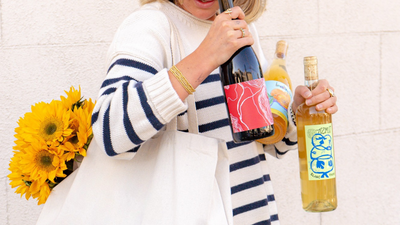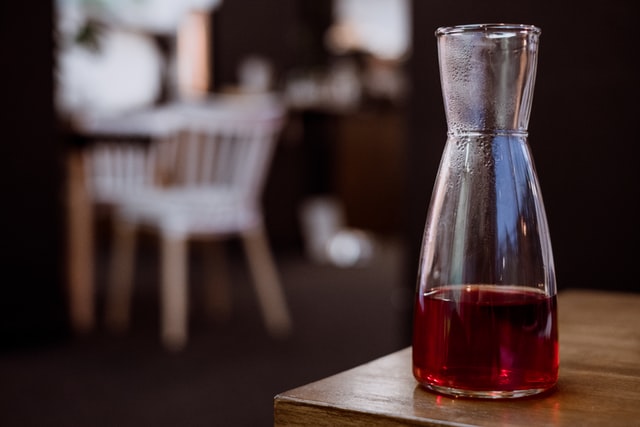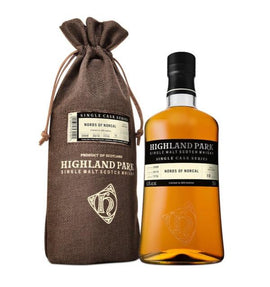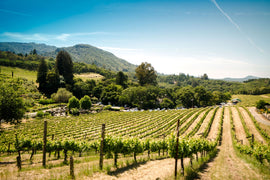Monterey County is known for many things: Pebble Beach, Carmel-by-the-Sea, Monterey Bay Aquarium, Cannery Row, Steinbeck Country, etc. Unless you're a local, or really in the know, the magnitude of the local wine region remains somewhat unknown. “Monterey is the last major coastal region of California that hasn’t been completely blown up,” says Ian Brand, who produces his three wine labels, Le P’tit Paysan, La Marea and I. Brand & Family, in a warehouse in Salinas. California wines have never been better, but they have also never been more expensive. As Napa and Sonoma grow more crowded, expensive, and inaccessible, innovative winemakers look to the geographic fringes. By “Monterey,” Brand means a roughly 50-mile radius comprising land in Monterey, San Benito, Santa Clara, and Santa Cruz counties whose conditions are defined by the Monterey Bay itself: the wind, the temperature swings, the diversity of soils, the positioning on the Pacific Plate.
Ian ended up in the wine business haphazardly. Born in Connecticut, he spent his post-college years as a grizzly bear tour guide on the Alaskan peninsula, in the Peace Corps in Ecuador and as a ski bum in Tahoe. He got jobs washing buses in Washington state, building houses in Nantucket, Mass., and working the Salt Lake City Olympics. He was living out of his car when he ended up in Santa Cruz. After a stint supervising juvenile convicts cleaning up highway medians, Brand got a job doing maintenance at one Santa Cruz’s most innovative wineries, Bonny Doon, founded by Randall Graham, which led to a job in the winery’s cellar. Brand landed an assistant winemaker job at Big Basin in 2004, a new winery that was just starting up in the Santa Cruz Mountains, but according to owner of the Santa Cruz Mountain Winery, Jeff Emery who leased space to Big Basin, “Ian was always very innovative, wanting to try new things. It makes sense to me that he broke out on his own, because there were things he wanted to play with that he wasn’t going to get to as long as he had an employer.”
In 2008, Ian made 200 cases of Chardonnay at Emery’s Santa Cruz Mountain Vineyard facility. He called his wine Le P’tit Paysan, “the little peasant.” In 2012, Ian released a second line of wines, the Spanish-inspired La Marea, founded on single-vineyard interpretations of Grenache and Albariño. The fruit for La Marea’s Albariño comes from the wind-battered Kristy Vineyard in Montery County. The vineyard lies within the western bench over the Salinas River on an alluvial fan of broken siliceous/calcareous sediments. It’s a special site, and due to abundant California sunshine, cold desert nights, and near constant coastal breezes off the Monterey Bay, the fruit reaches full phenological ripeness at low potential alcohol and bright natural acidity. For the 2019 Albariño, the fruit was picked under 22 brix with vigorous natural acidity. Two thirds of the grapes were whole-cluster pressed, and one third de-stemmed and left on skins for two days. The skin contact portion of the blend was inoculated with a pied de cuvée yeast culture harvested in the vine rows at Kristy. The wine was cold-fermented in stainless-steel to preserve minerality, aromatics, and freshness, and aged on its lees for four months. The finished wine was sterile-filtered before bottling, and only 1420 cases were produced.
The 2019 La Marea Albariño is lively and refreshing, with exceptionally expressive floral flavors. Bright aromatics of lemons and limes fill the nose, followed by stone fruit, white peach, and minerality on the palate. The racy acidity ties it all together and the briny, salty, savory quality continues through the enduring finish. This wine will pair wonderfully with lobster, scallops and other flavorful fish, such as sea bass, salmon, or swordfish. It’s perfect with traditional dishes such as Almejas a la marinera-clams steamed with a bit of Albariño, some olive oil and some diced onion, Pulpo a la Gallega (Galician octopus)-a very spicy dish where the octopus is cooked with paprika, or Caldeirada (Galician fish stew)-made with potatoes and a white fish.
The 2019 La Marea Albariño is $22.00/bottle, $237.60/case.
Ribera del Duero is a most unlikely area to produce great wine. The growing season is short and intense. Bud break for vines is the latest in Europe, frosts in May are a constant danger, and frosts in September are less common, but still hazardous. The region is a bleak landscape of flat-topped rocky heights on the northern meseta of Spain, with an average altitude of 700-800 meters. The Ribera del Duero lies both south and west of Rioja on a much higher elevated plateau, only two hours north of Madrid, in Castilla y Leon. The region sprawls for 100km from east to west along the N-122 trunk road, traversing the provinces of Soria, Segovia, Burgos and Valladolid. At its heart is a low valley, 2km wide, with sweeping plains planted with wheat and vines gently rising to flat-topped, sparsely forested hills on either side. The region is divided by the Duero River (Ribera del Duero literally means ‘bank of the Duero’), which gives local vineyards easy access to an ongoing water supply. The riverbanks and low-lying land with water lying close to the surface are called campiña (countryside) and terrazas (terraces); the shallow slopes above them, which are among the best for vines, are called laderas (sides), and steeper slopes called cuestas (slopes).
In 1982, Ribera del Duero became a D.O. (denominación de origen), a move inspired by the quality of Vega Sicilia, but promoted by Alejandro Fernández of Pesquera. Robert Parker took a liking to Pesquera, and Ribera del Duero was suddenly not just on the map, but shooting to stardom. In 1982, there were only 14 estates in Ribera del Duero; now there are more than 300.
Though his family has grown grapes in Northern Ribera del Duero for several generations, Juan Carlos Vizcarra is the first to make estate-bottled wine from their fruit. Founded in 1991 by Juan Carlos, Bodegas Vizcarra has 26 ha (64 acres) of vineyards in the towns of Mambrilla and Roa, in the northern central area of Ribera del Duero within Burgos province in Castilla y León. The story goes that when he was a boy, he noticed that the historic estates of Vega Sicilia and Pesquera would come to his family during bad vintages to buy fruit. He realized then they must have something truly special, and made a plan to one day make his own wine that would express their unique terroir. Juan Carlos Vizcarra is one of the pioneers of the “garagiste” winemaking movement in Spain and works exclusively by gravity. Allowing gravity to move the wine from fermenter to tank to barrel to bottle means no pumps, no mechanical interference - nothing to unnecessarily agitate the delicate fruit and extract excess skin or seed tannins. The result is an intensely aromatic, pure expression of Tempranillo that showcases the incredible concentration that Juan Carlos gets from his grapes.
Bodegas Vizcarra’s “Senda del Oro”is 100% Tempranillo. All the fruit comes from their Mambrilla vineyard, which sits at 849 m (2785 ft) elevation. The 11 parcels planted in 1987 are predominantly sand, clay, limestone and gravel. After selecting the best bunches, then the best berries, the grapes are de-stemmed and crushed. Maceration lasts 12 to 15 days during and after fermentation. Fermentation is carried out in stainless-steel tanks and malolactic fermentation takes place in barrels. The wine is aged for 6 months in 2 years-old French and American oak barrels. Juan Carlos believes relatively short aging in used barrels allows the wine to oxygenate and become softer and rounder without the added wood tannins of new barrels. Like all the wines at Bodegas Vizcarra, “Senda del Oro” is made using gravity-fed winemaking to preserve the freshness and elegance that are intrinsic to the limestone-inflected plantings found in northern Burgos. Oak is used only in a supporting role as a framer of the fruit. Meticulous winemaking practices, organic viticulture, vigorous thinning of grape clusters, and high diurnal temperature fluctuation result in wines that are a confluence of power and freshness.
“The 2018 “Senda Del Oro” is a fruit-driven young Tempranillo with aromas of licorice and good balance between fruit and oak. On the palate, it coats the tongue with some creamy notes and ripeness but without excess.” (WA). It is clean and modern, medium to full-bodied, with integrated acidity and a lingering, concentrated fruity finish. This Tempranillo goes wonderfully with lamb chops, rib-eye steak, pork sausage, smoked game and charcuterie, but works well with vegetable preparations too. It’s an excellent companion to most tapas dishes, as well as mushroom risotto, sheep and goat milk cheeses, and, of course, a meat-focused paella.
The 2018 Bodegas Vizcarra Senda del Oro is $27.00 blt/ 291.60/case





